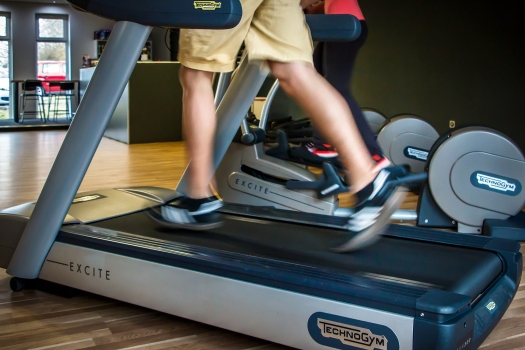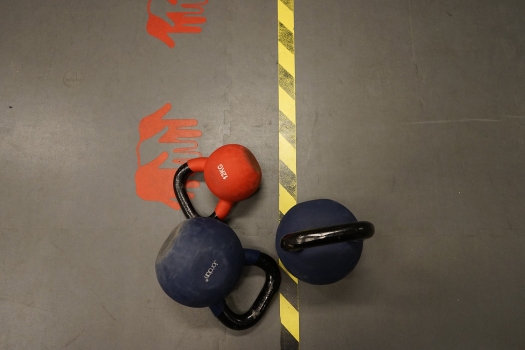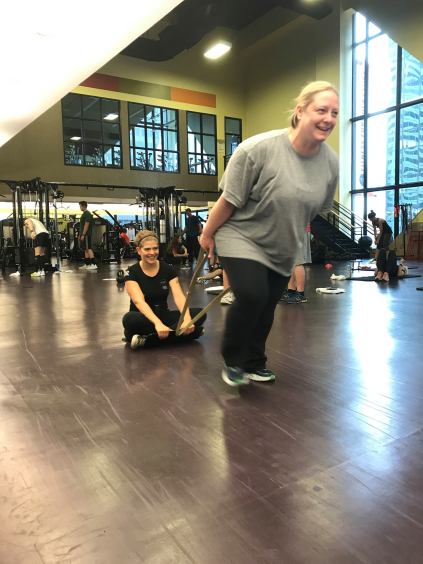A few months ago, I met with a new client who told me she wanted to build more core strength.
This is a common goal I hear from clients of all different ability levels.
My new client mentioned she experienced regular lower back pain after workouts. After a bit of digging, I found out she was regularly performing up 100 crunches at the end of every workout.
Yet when I took her out on the gym floor for an assessment, she could not complete a 20 second plank without arching her back.
Clearly, her current workout was not achieving the desired effect.
Instead of throwing more crunches and planks at this client, I removed these exercises and taught her how to use her core in a different way.
Slowly but surely, her posture improved. She felt much stronger on squats and pushups and no longer experienced back pain after workouts.
How was she able to achieve these results?
Your core is designed to stabilize your torso and transfer force between different parts of your body during activity.
Many popular core exercises can cause discomfort without building a better looking or stronger midsection.
To effectively train your core, your training needs to include more than just crunches and Russian twists; you must prioritize core exercises that force you to resist movement in multiple planes.
These include anti-extension, anti-rotation, and anti-lateral flexion movements.
Rather than jacking up your back and neck with hundreds of crunches, the exercises described below will give you better results with less risk.
Anti-extension
Anti-extension movements challenge your body to resist lumbar extension, or the arching of the lower back.
These movements should form the cornerstone of your core training.
Without anti-extension strength, you will be unable to properly perform many basic exercises like squats, push ups, and deadlifts with proper form.
The most basic anti-extension exercise and the first core exercise I teach to new clients is the dead bug.
To complete a dead bug, lie on your back with your legs rolled off the ground in a 90 degree angle and your arms extended above your chest. Your spine should be completely flat in this position; there should be no gap where air can pass under an arch in your lower back. Take a big breath into your belly and then slowly initiate the exercise by extending the opposite arm and leg toward the ground. Exhale as you reach, then inhale as you return to the starting position.
The goal is to complete the entire set slowly without arching your lower back. When basic dead bugs are no longer challenging, you can progress them by adding resistance via an exercise band, kettlebell, or swiss ball.
Front planks are another great exercise you can use to build anti-extension strength. However, this is not my first choice because if your core is really weak you likely won’t be able to get into a good plank position.
Watch the video for a few tips on how to properly set up for a front plank. If you can’t quite execute this yet, stick with dead bugs for now.
Advanced trainees can test their anti-extension strength with fallout variations. You can perform fallouts using a TRX or other ring system. More commonly, many gyms have a small ab wheel you can use for rollouts. The goal is to maintain a flat back as your arms move up over your head.
A final anti-extension exercise I like is the front-rack carry. Hold two kettlebells in front of your chest in the front rack position (see video) and walk with them. As you walk, keep your rib cage directly on top of your pelvis. Do not lean backwards, arch your back, flare your ribs, or rest the weights on your chest.
Anti-rotation
Anti-rotation exercises test your ability to resist rotation. This is an important skill as many lower back injuries occur during uncontrolled or unintended torso rotation.
Strong anti-rotation strength is also crucial for runners. Good form and endurance require you to run without rotating with every stride.
Read more: What Runners Must Know About Strength Training
I use one primary exercise, the Pallof press, to train anti-rotation strength.
To complete this exercise, stand to the side of a cable stack with a single handle set up at chest height. Your feet should be a bit wider than shoulder width and directly in line with each other. Pull the handle in front of your chest, take a big belly breath, and then exhale as you push your arms out in front of your chest. You will find the weight of the cable stack wants to pull your body around toward it; resist this force and keep your posture squared and straight. Finish the rep by returning your hands to your chest.
There are few ways to progress this exercise if it becomes easy.
First, change your stance. Half-kneeling and tall-kneeling Pallof presses decrease your base of support and force you to truly engage your core to stay square.
You can also add pauses with your arms in the extended position rather than simply returning to your chest immediately after each rep.
Anti-lateral flexion
The final category of anti-movement teaches you to resist bending side to side. The basic side plank is a great example.
Set up on your side with your forearm on the ground and your elbow directly beneath your shoulder. Stack your legs on top of eachother, then use your hips and obliques to push yourself off the floor into a straight line.
Side planks can be quite challenging if you have never tried them before, so start with just 5-10 seconds and build from there.
Another exercise I use to train anti-lateral flexion is the 1-arm farmer carry. Grab a heavy weight in one hand and walk around with it. The goal here is to maintain a tall, balanced posture. Do not lean too far to the opposite side or rest the weight against your leg.
Putting it all together.
If you want to challenge your core strength, try a few of these movements which force you to resist movement in multiple planes at once.
Advanced plank variations
Cross-body carry (combines 1-arm farmer carry and front rack carry)
Proper core training requires you to train your core as a part of your whole body. The muscles of the core must be able to stabilize your position as you move around. Make sure to include some anti-movements in your normal workouts to build a stronger core, reduce back pain, improve form on other exercises, and truly test your body.


























